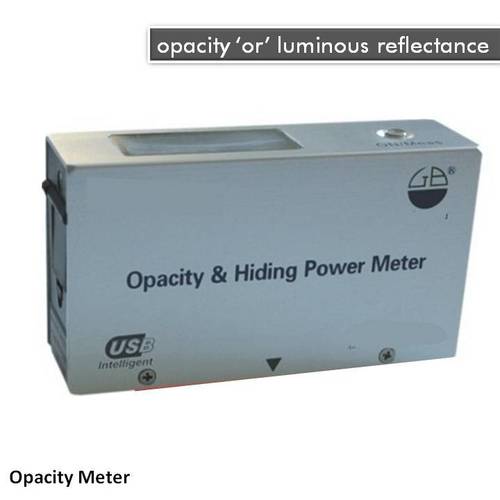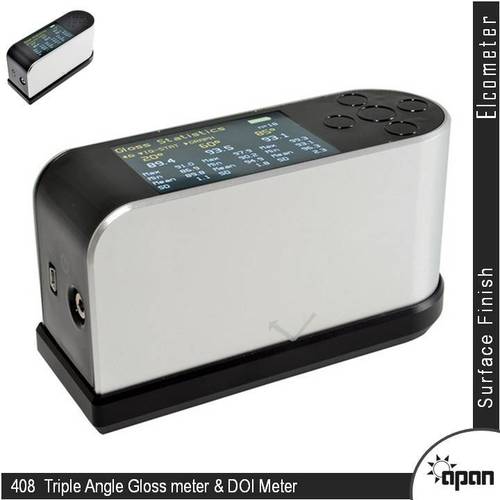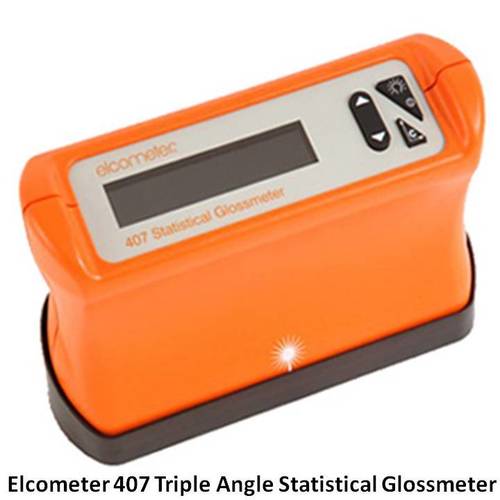Opacity Meter
Opacity Meter Specification
- Temperature
- 10C to 40C
- Max Height
- 150 mm
- Test Range
- 0%100% Opacity
- Operating Voltage
- 220V-240V AC
- Accuracy
- 1% opacity
- Features
- Portable, user friendly, quick analysis, microprocessor based, durable body
- Display Type
- Digital LCD Display
- Application
- Measurement of opacity of paper, film, packaging and similar materials
- Interface Type
- USB/RS232 (Optional)
- Number of Specimens
- 1 at a time
- Measuring Range
- 0 to 100% opacity
- Humidity
- 20-80% RH (Non-condensing)
- Port Size
- Standard
- Automation Grade
- Semi-automatic
- Frequency
- 50 Hz
- Resolution
- 0.1% opacity
- Equipment Type
- Opacity Meter
- Response Time
- <2 seconds
- Specimen Size
- Cut samples, max 50 mm width
- Gas Pressure
- Ambient
- Mounting Type
- Table Top
- Power Supply
- 230V AC, 50 Hz
- Usage
- Laboratory/Industrial
- Capacity
- Single Sample
- Machine Weight
- 8 kg
- Test Speed
- Standard (Fixed)
- Test Width
- 50 mm
- Test Stroke
- Up to 150 mm
- Control Mode
- Digital Touch Control
Opacity Meter Trade Information
- Payment Terms
- Cash in Advance (CID), Cheque, Cash Advance (CA)
About Opacity Meter
As a Authorized dealer we are engaged in providing the broad assortment of wide gamut of optical instruments.This meter is used to measure the opacity, or luminous reflectance, of a grey scale. Suitable for the evaluation of a coatings hiding power, or simple shade sorting tasks of metallized films, anodized aluminum or ceramics. It can calculate the contrast ratio (opacity) and store it. The operator can call up the data when required. It complies with ISO 2814, ISO 3906 , ISO 6504, BS 3900 and DIN 55984.
Features
- Small and light, easily portable.
- No warm up period.
- Calibrate automatically: judge zero point and calibrate with the white board automatically
- With USB interface and software for transmitting data.
- One 1.5V alkaline Battery can be used for almost 60 hours and 100,000 reading.
- Long-term stable light source needs no replacing.
- With simple test mode and Statistics-Mode.
- Calculates the reflectance value automatically
Main Technical Parameters:
- Working angle: 0(irradiate) , 45(receive) ; CIE Illuminant C
- Range of Measurement: 0-100 units
- Resolution: 0.1%
- Accuracy: 1 unit or 1% (full scale)
- Power Supply: One 1.5V alkaline battery or rechargeable
- Window Size:12x17mm(ellipse)
- Size: 114x32x64mm
- Weight:180g
- Testing Environment: 10~40, relative humidity should not be over 85%.
Advanced Opacity Measurement Technology
Equipped with a high-intensity LED light source and digital touch controls, this Opacity Meter ensures precise measurements for paper, film, and packaging materials. It provides rapid, accurate readings and quick response time, making it ideal for laboratories and industrial settings demanding quality control.
Intuitive Operation and Reliable Calibration
Automatic and manual calibration options guarantee compliance with IS 11870 and ISO 2471. The microprocessor-based system, combined with a user-friendly interface, allows for seamless setup and operation, reducing errors and ensuring repeatable results every time.
Robust Design and Smart Storage
Crafted with stainless steel and ABS plastic, this durable device is built to withstand laboratory environments. The in-built memory feature allows users to conveniently store and retrieve historical test results, supporting effective data management for quality assurance teams.
FAQs of Opacity Meter:
Q: How is the opacity meter calibrated for accurate results?
A: The opacity meter offers both automatic and manual calibration modes, allowing users to meet industry standards such as IS 11870 and ISO 2471 with ease. This ensures consistent and accurate measurements across different testing sessions.Q: What is the typical process for using the opacity meter in a laboratory setting?
A: To use the device, insert a single cut sample (up to 50 mm width) into the non-slip sample holder, select the desired calibration mode, and initiate the test using digital touch controls. Results are displayed on the LCD and can be stored for future reference.Q: When should I use the automatic calibration feature?
A: Automatic calibration is recommended for routine operations or when testing multiple specimens, as it provides rapid setup and minimizes user intervention, supporting efficiency in quality control environments.Q: Where can the test results be stored and accessed?
A: The Opacity Meter includes in-built memory storage, allowing users to save results directly on the device. These records can be accessed later for reference or transferred using the optional USB/RS232 interface.Q: What is the benefit of the high-intensity LED light source in this instrument?
A: The high-intensity LED light source ensures stable and uniform illumination, leading to accurate and reproducible opacity measurements. It enhances the reliability of results and reduces maintenance requirements compared to conventional lamps.Q: How does the design ensure safety and durability during operation?
A: Constructed from stainless steel and ABS plastic with a table-top mounting design, the meter provides a stable and robust testing platform. Non-slip grips on the sample holder further ensure that specimens are securely held, minimizing operational risk.

Price:
- 50
- 100
- 200
- 250
- 500
- 1000+
More Products in Optical Instrument Category
DOI HAZE GLOSS METER
Accuracy : Gloss: 1 GU, DOI/Haze: 0.5 units
Features : Selfcalibration, memory storage, data output
Display Type : Digital LCD
Interface Type : USB, RS232
Application : Surface gloss, DOI, haze evaluation
Usage : Laboratory/Industrial
Chromatic Meter
Accuracy : 0.1 Unit
Features : High Precision, Portable, Easy Calibration
Display Type : Digital LCD Display
Interface Type : USB/RS232
Application : Color Measurement, Color Fastness Testing
Usage : Laboratory, Textile Industry
Digital Colorimeter
Accuracy : 0.01 Abs
Features : Portable, inbuilt memory, calibration feature
Display Type : Digital LCD
Interface Type : USB/RS232 (Optional)
Application : Used for color analysis of liquids in lab and industry
Usage : Analytical laboratory, research, industrial QC
Triple Angle Glossmeter
Accuracy : 1.2 GU (0100 GU); 1.2% (>100 GU)
Features : Tripleangle measurement (20, 60, 85), compact design, autocalibration, memory storage
Display Type : Large LCD digital display
Interface Type : USB
Application : Surface gloss measurement, paint, coatings, plastics
Usage : Laboratory and industrial

 Send Inquiry
Send Inquiry Send Inquiry
Send Inquiry




